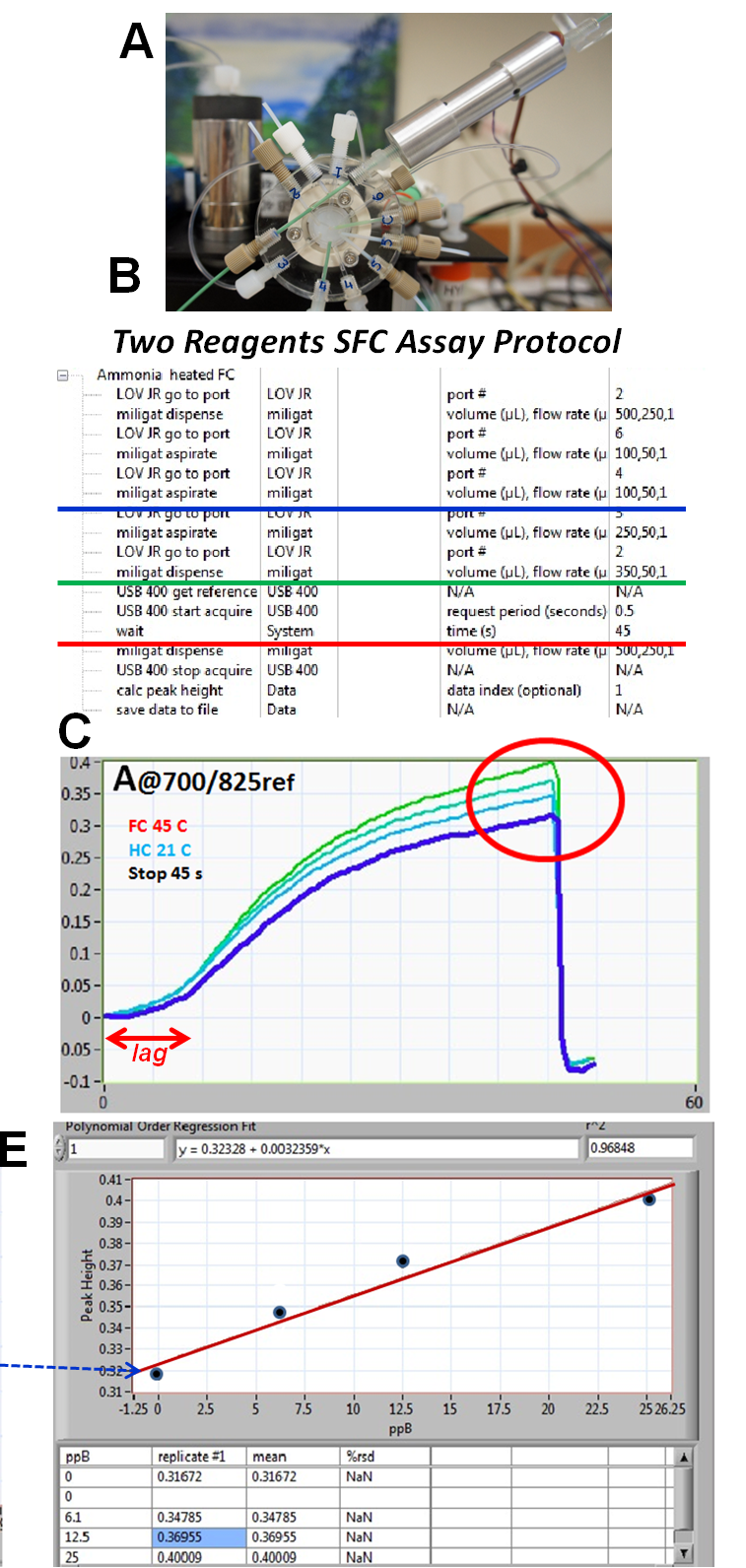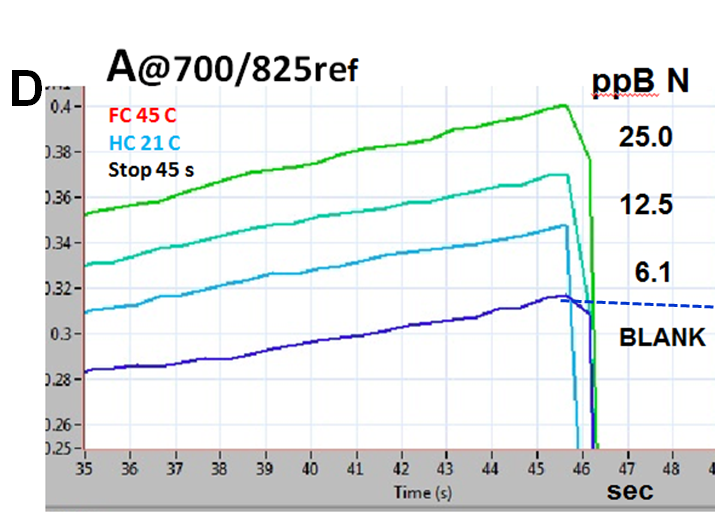There are not many options left for further extension of the calibration range, since increasing of temperature, of incubation time, and of length of the light path, have reached practical limits.
Yet, since the temperature of the flow cell (A) is so well stabilized, and assay protocol (B) is so well controlled by software, it turned to be feasible to expand the calibration range down to low ppB level (C) by monitoring reliably the change of absorbance within 0.1 A unit (D), and thus obtain a calibration graph (E) with LOD of 3 ppB. The reagent background signal although high, (0.3 A) turned to be remarkably reproducible, provided that the reagents were prepared fresh daily.
Note that the response curves are result of two simultaneous processes; heating of the reaction mixture from 21 C to 45 C during the initial lag phase, followed by the reaction rate curve, when indophenol blue is being formed. This approach was chosen with aim to maximize response, since, if the reaction was initiated already in a heated holding coil, the amount of product formed within the flow cell would have been smaller.
Simultaneous Nitrite & Nitrate Assay
2.2.23.











